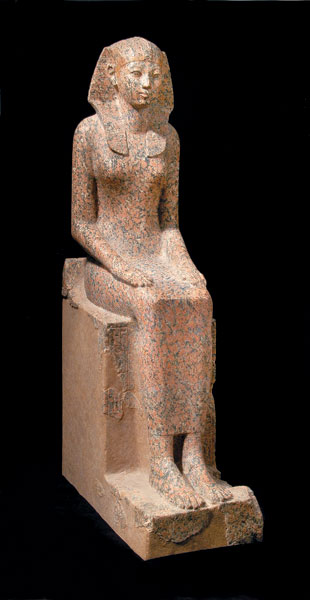Image Details

A feminine Hatshepsut, with a woman’s dress and softly rounded breasts, is represented in this life-size granite statue from the queen’s mortuary temple at Deir el-Bahri. As pharaoh, Hatshepsut often was depicted as a man, drawing on traditional imagery devoted to (male) kingship. This is one of only two statues from Deir el-Bahri that show the queen in female dress. Even in this statue, however, Hatshepsut wears the nemes headcloth reserved for the king.
The inscription on the throne, too, refers to Hatshepsut as a woman. Preserved on the back of the throne are two images of the goddess Taweret, who protected women in childbirth. Ancient Egyptian women may have made offerings to this statue of Hatshepsut to ensure a safe pregnancy.
